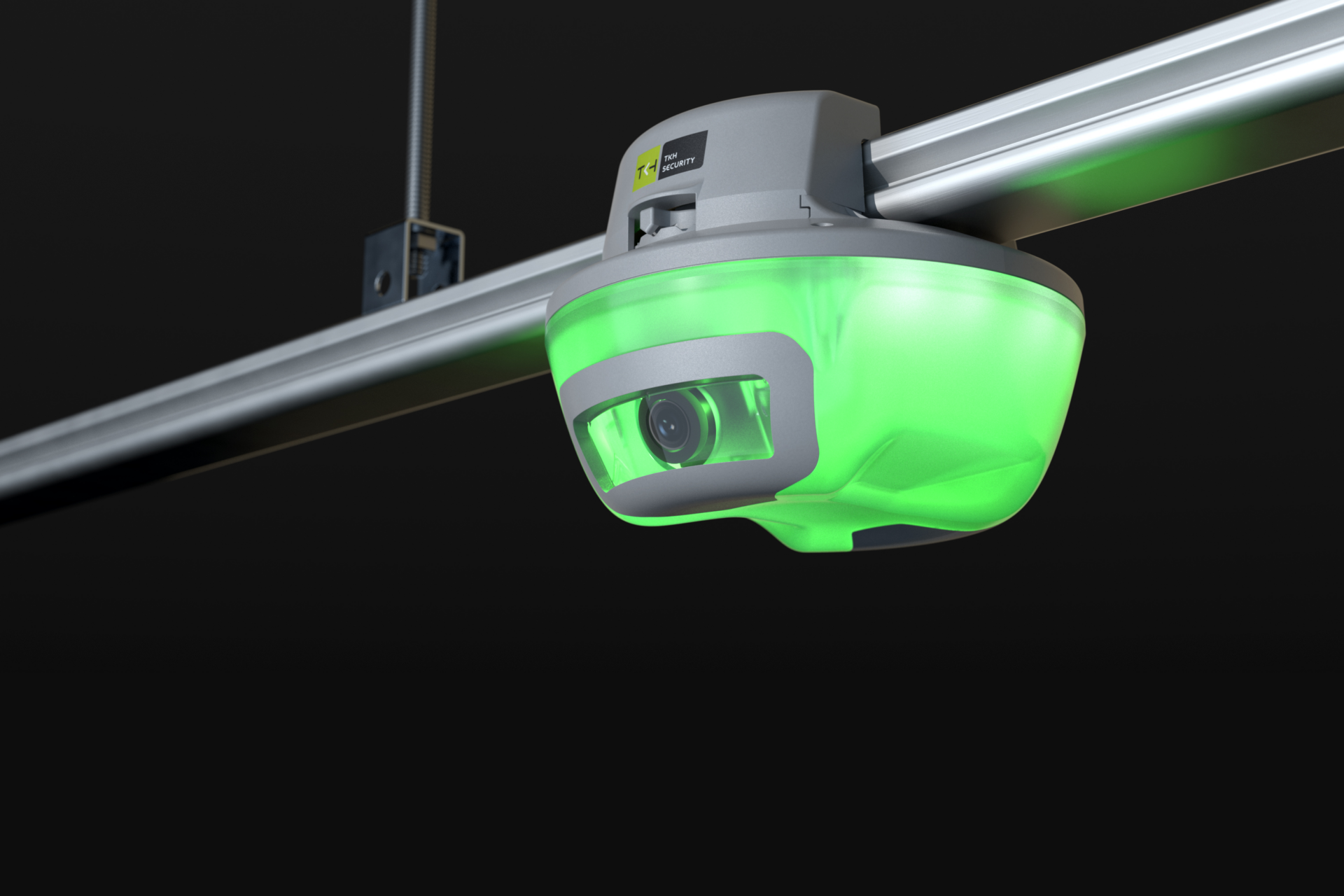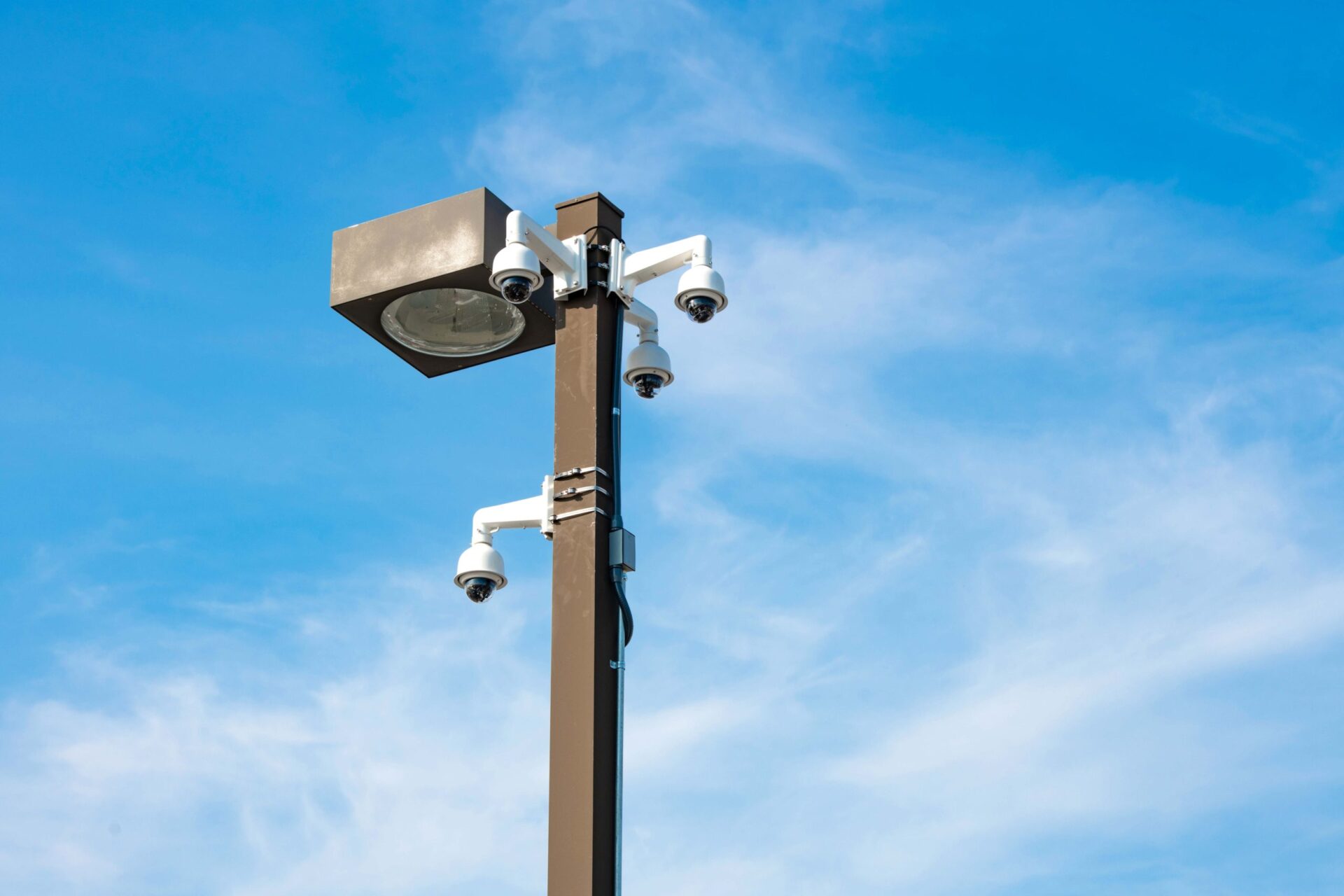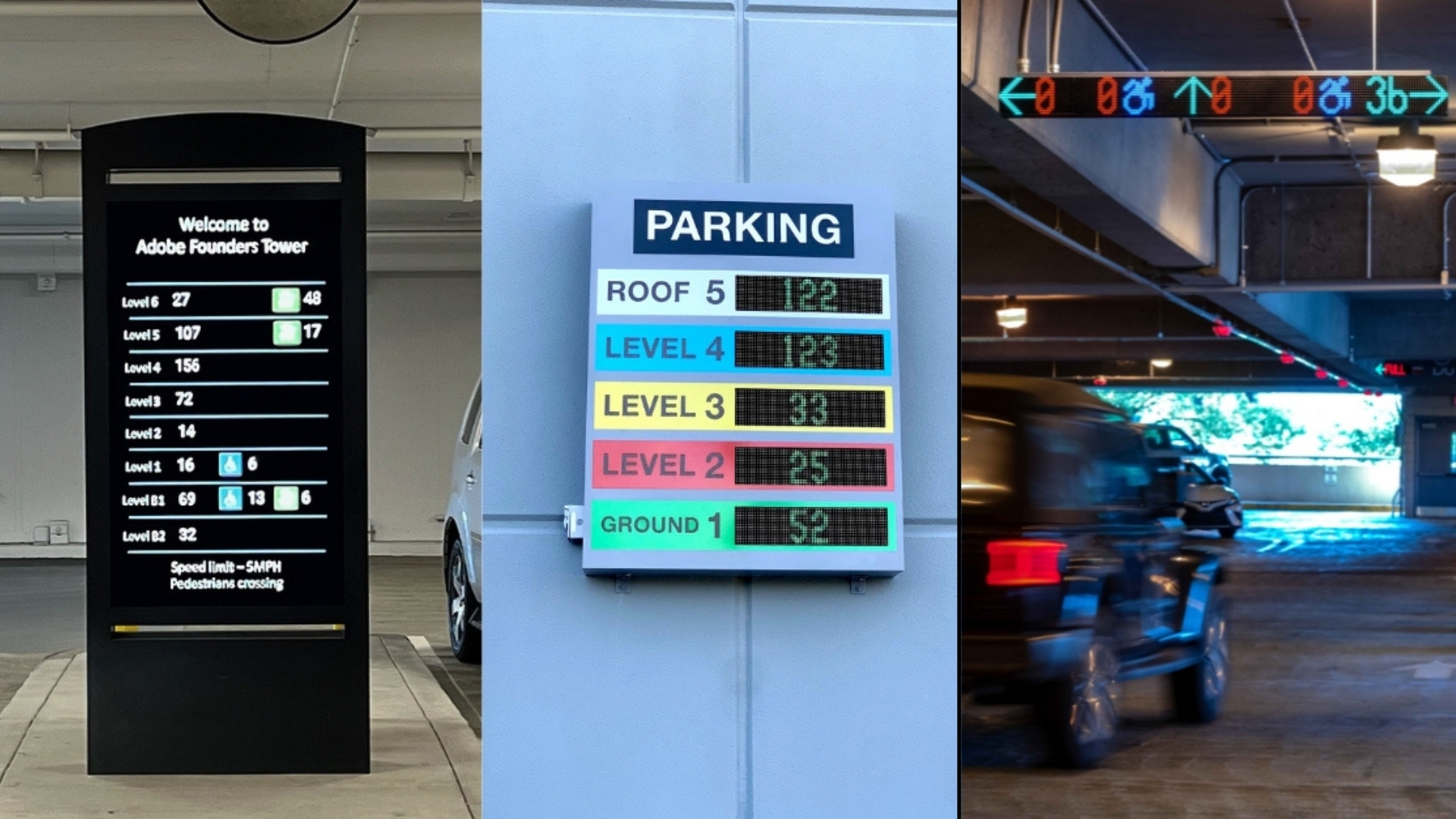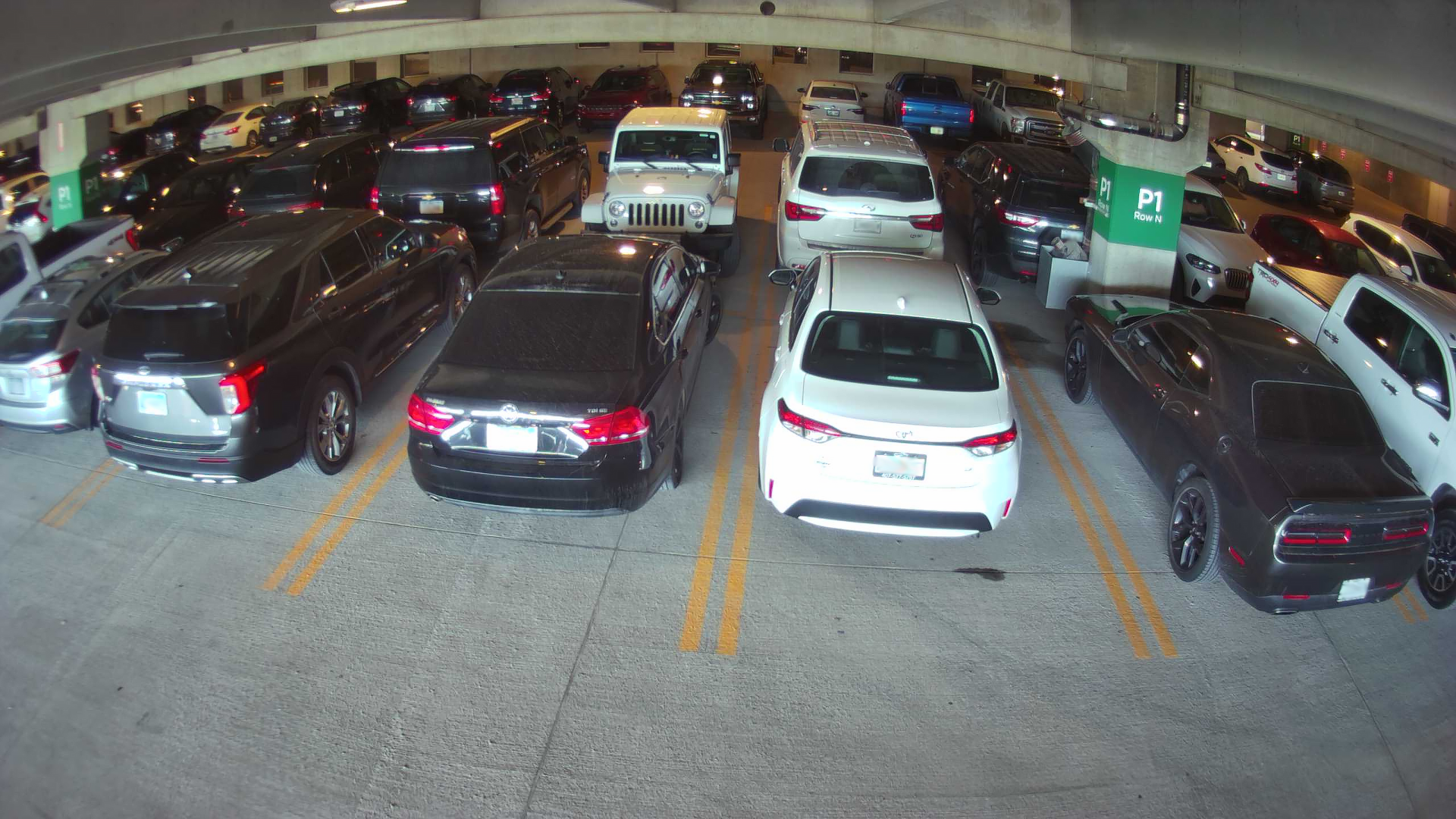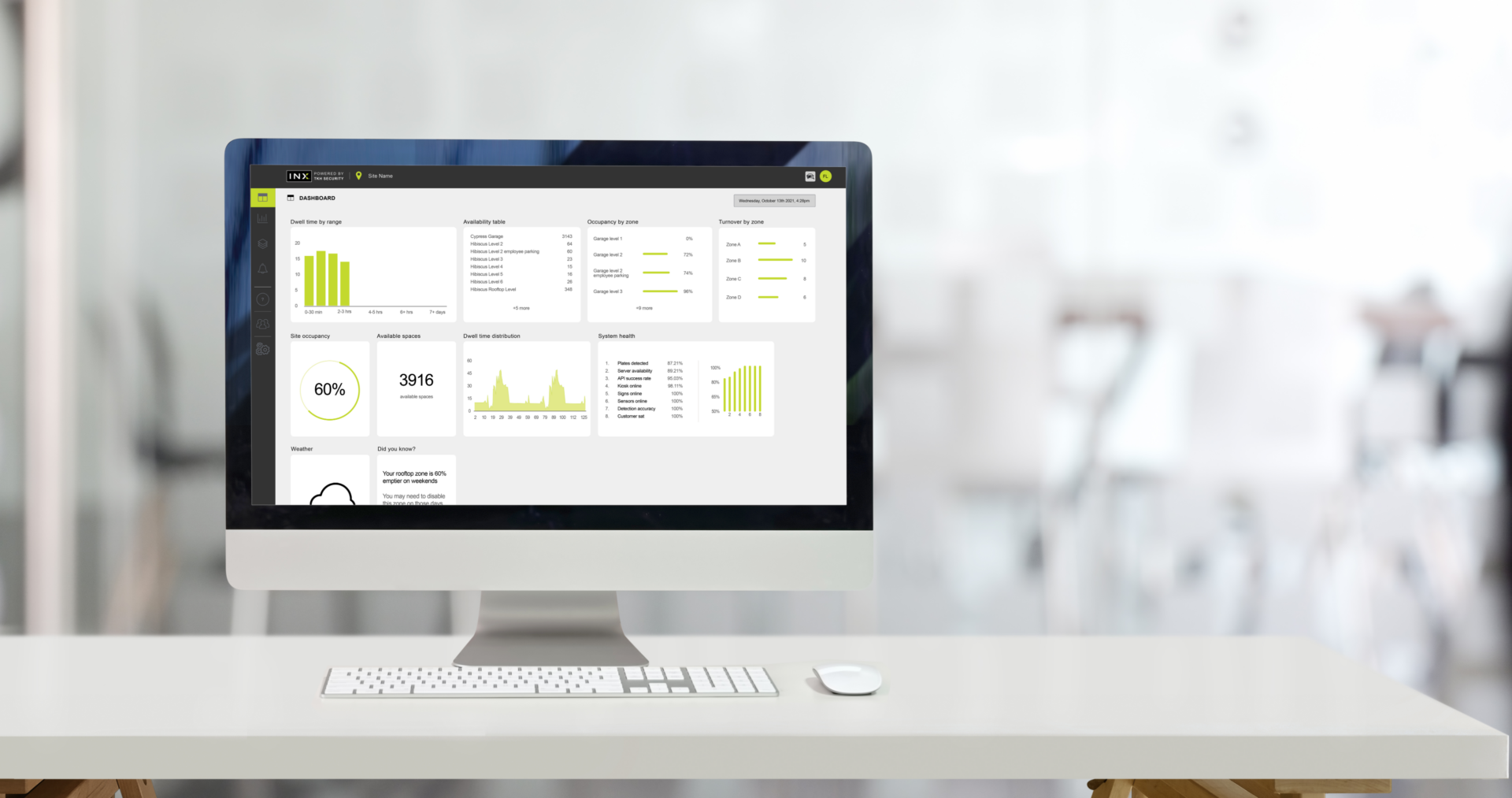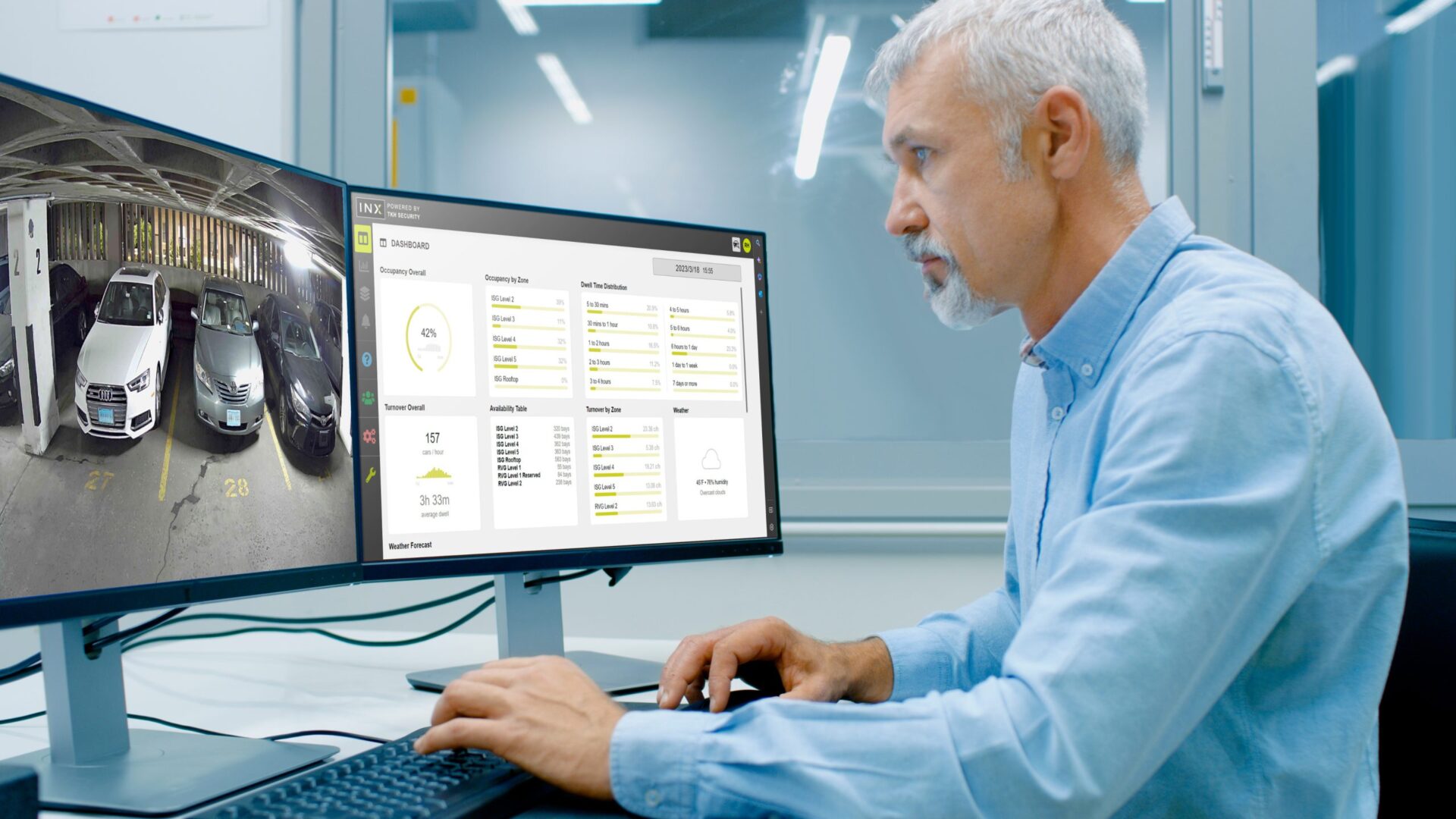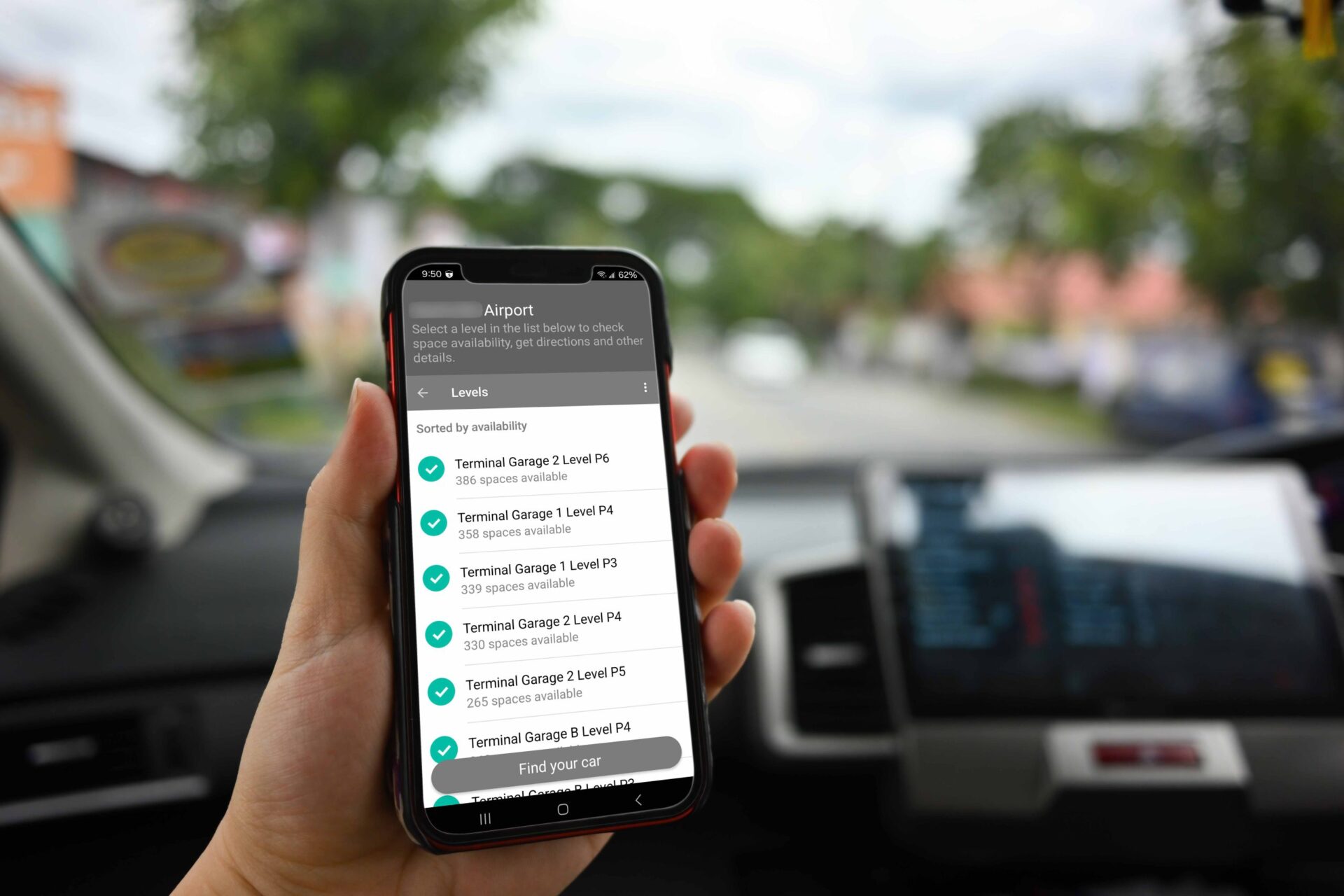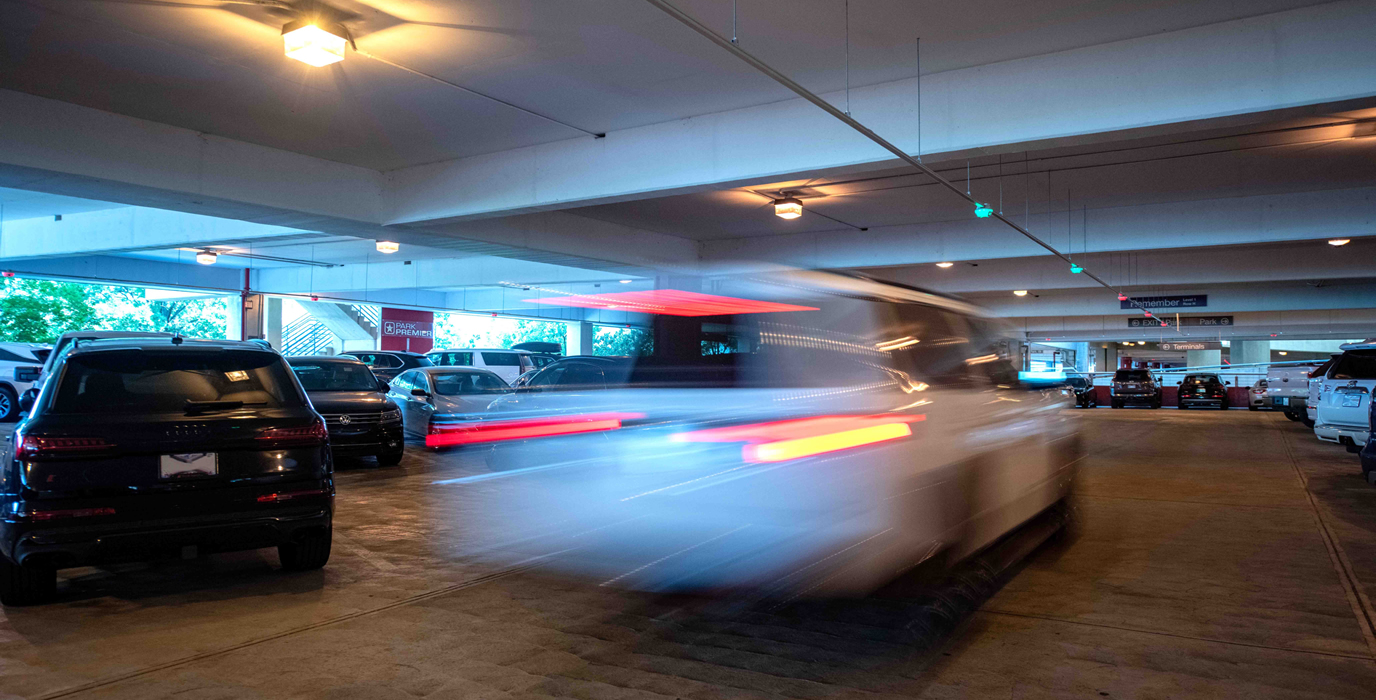Prepare your revenue stream for takeoff.
We understand the unique challenges airports face in managing their parking facilities efficiently. Explore how our innovative parking guidance solutions are reshaping the way airports manage parking, making travel smoother and more convenient for passengers and staff alike.
Industry Challenges
Today’s on-airport parking facilities are dealing with an unprecedented set of pressures and challenges that are eroding parking revenues, straining resources, reducing safety and security, and driving up operational costs. With potential availability concerns, no one looks forward to the process of finding a parking space at an airport, especially during peak travel periods. When airport parking garages and surface lots are underutilized, the resulting traffic congestion can lead to premature expansion/construction to compensate for the parking facility overall inefficiency. Plus, traditional security systems have a hard time getting an unobstructed view of key areas where undesirable events can take place, like in and between parking spaces.
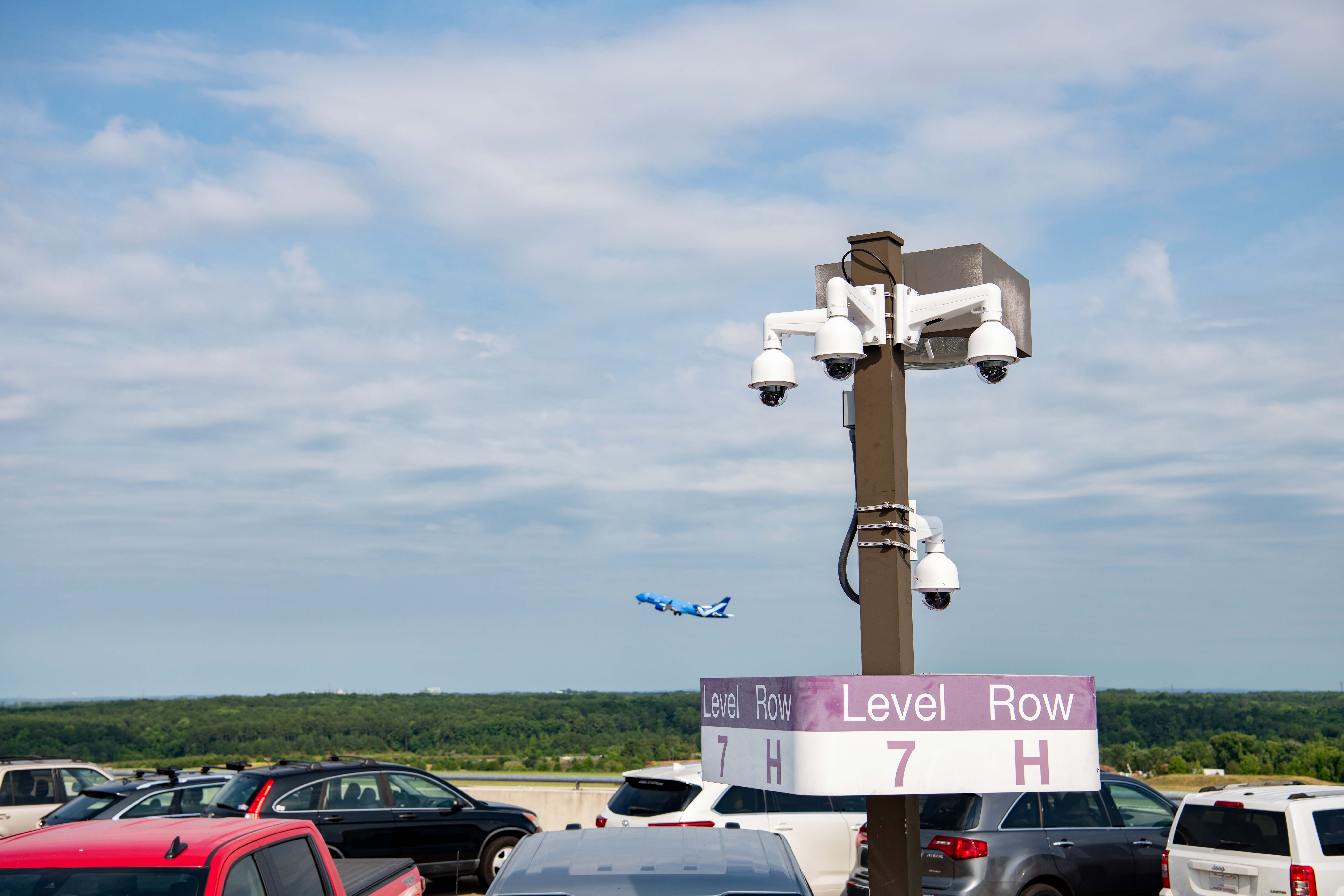
Airport Solutions
Would your travelers pay premium rates to park closer to the terminal? With our patented Park Assist Automated Parking Guidance System (APGS), you’ll not only justify an overall higher level of rates versus off-airport competitors, but you can easily institute space-by-space pricing for the most desirable areas in your garage while accessing the numerous additional benefits of our revolutionary camera-based guidance system.
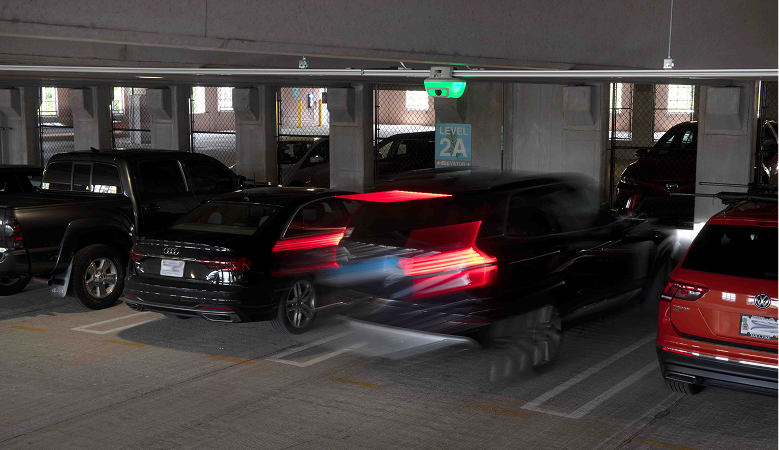
Tailored Solutions for You
Leveraging advanced guidance-and-beyond technology to revitalize
airport profitability.
Our APGS has emerged as a viable single-source solution. The benefits of this smart-infrastructure investment — which is growing exponentially in terms of real-world deployment — include an elevated customer experience, reduced time-to-park, heightened operational efficiency, and a decreased carbon footprint.
The dynamic pricing power of
Business Development+
Throughout the day and evening, travelers are arriving who would gladly pay a premium for one of your most desirable parking spaces. This includes travelers who are running late, families with kids in tow, business travelers looking to streamline their pre-travel agenda, or just about anyone desiring a shorter walk to the terminal.
Available as a Premium Subscription, our multifaceted Business Development+ API package, combined with your PARCS or other revenue management system, enables you to set premium and conditional pricing rates at will throughout your entire facility. There’s no need for expensive gate systems or costly loss of spaces. This intelligent feature is an all-encompassing solution with the power to instantly increase parking garage revenues and the bottom line.
Next-generation guidance to streamline departures
Our next-generation parking guidance and wayfinding technology can reduce the time needed to find a space by up to 63%.* This process can even be kick-started via push notifications from your airport’s website or smartphone app. As a result, travelers arrive at the terminal quicker, are less stressed, and have more time to make purchases at airport concessions.
Upon exit, our Park Finder software module enables returning travelers to find the exact location of their vehicle by simply typing in three numbers or letters from their license plate at a touchscreen kiosk, on a smartphone app, or when inserting their parking tickets at a pay station. This feature is available with an INX Standard Subscription.
* According to a science-based benchmarking study on time-to-park conducted by Park Assist in collaboration with the Brisbane Airport Corporation (BAC). This groundbreaking before-and-after APGS analysis encompassed two parking facilities with a combined total of 7.903 individually M4-monitored bays
Automating the license-plate
inventory process
The use of integrated License Plate Recognition (LPR) is a central element of our camera-based smart-sensing APGS system, so each space in your garage is already being monitored. This enables you to schedule license-plate inventories, eliminating the cost of time-intensive manual walk-throughs or mobile LPR drive-bys, and reducing lost ticket revenue.
Additional surveillance from a unique vantage point
In a post-911 world, the more eyes you can have on your facility, the better. The fact is, traditional security systems have a hard time getting an unobstructed view of key areas where undesirable events can take place: in and between the parking spaces.
With a standard automated parking guidance system (APGS) installation, smart-sensor cameras can identify vehicles and monitor occupancy in every parking space. Through our Park Surveillance add-on software module, our M5 based APGS can also capture HD streaming surveillance 24/7 video whenever motion is detected in or around a space, or continuously, if desired. This provides an expanded level of security and safety that would otherwise be cost-prohibitive. Plus, since recordings can be saved up to 90 days, security can easily work with authorities if needed.


